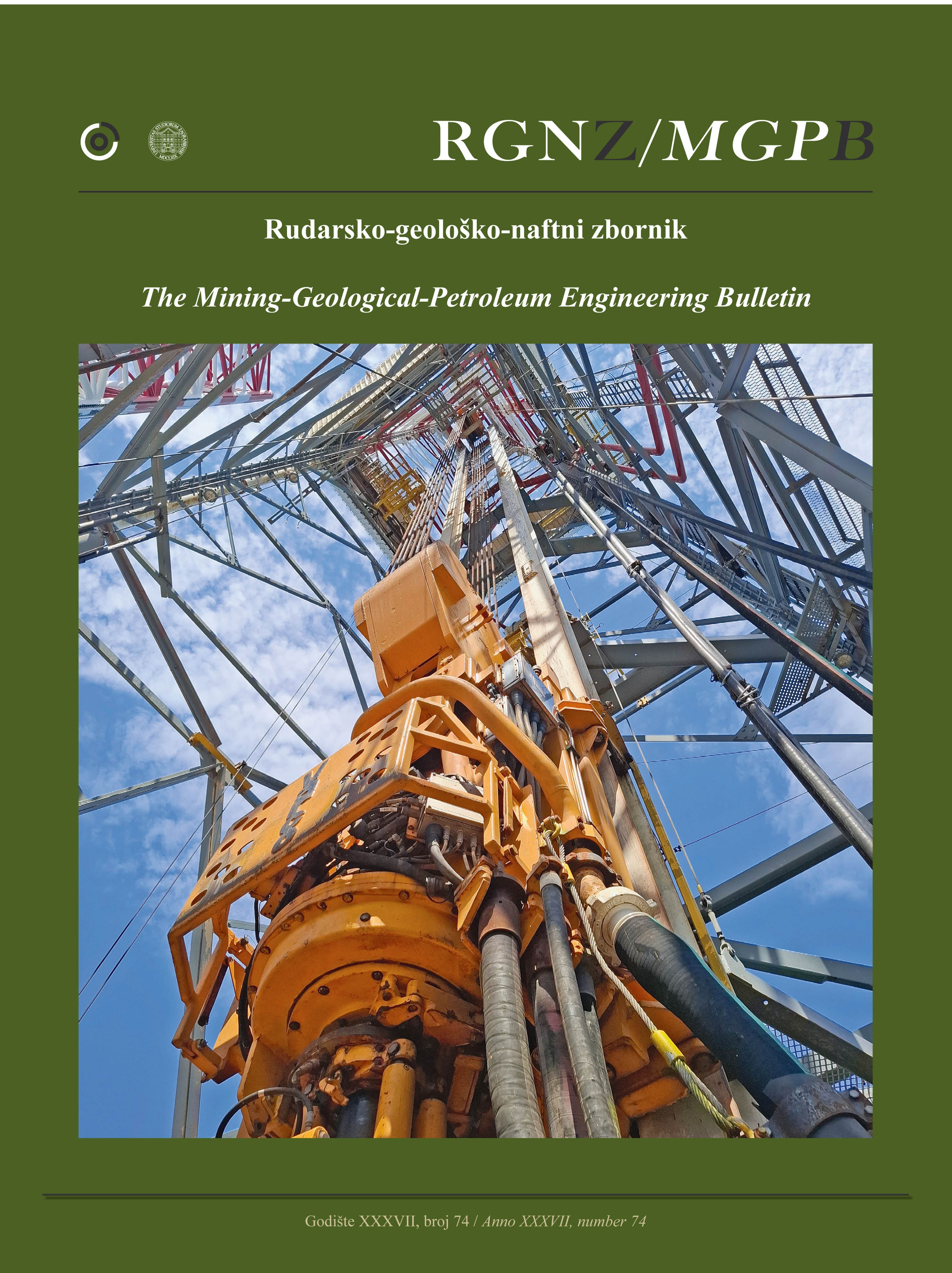Modelling the seasonal dynamics of heavy metal pollution of water bodies within a mining area
DOI:
https://doi.org/10.17794/rgn.2025.3.13Keywords:
heavy metals, chemical pollution, ecotope, complex environmental gradient, multidimensional ordination of ecotopes, environmental safety, mathematical modellingAbstract
Waste heaps from coal mines pollute the environment through spontaneous combustion of waste and contaminated wastewater leaking into underground and surface aquifers. Together with pollutants, a large concentration of heavy metals gets into the water. The object of this research is water bodies in the impact zone of the Chervonohrad mining district, a part of the Lviv-Volyn coal basin (Ukraine). Water chemical contamination level of anthropogenic reservoirs in the mining district was measured by indicators developed based on geochemical and hygienic environmental investigations. Methods of statistics of parameters of chemical pollution of water and soil; correlation analysis; data mining methods; assessment of similarity of ecotopes and grouping of chemical elements based on cluster analysis; multidimensional ordination of ecotopes in the space of geochemical indicators and graphical visualization based on Principle Component Analysis were used in the research. Chemical pollution of rivers and reservoirs in Male Polissia with heavy metals during the season is characterized by significant heterogeneity. The main reason of the deterioration of the ecological state of water bodies is related to the increase in the content of Mn, Ni, Cd, Pb compared to the maximum permissible concentration. The highest level of pollution during the entire monitoring season was observed in the water bodies at the foot of the Mezhyrichanska mine spoil tip near the city of Chervonohrad. Based on the correlation between the heavy metal content and the complex gradients of the aquatic environment, the following associations (groups) of chemical elements were identified: I - Cu, Pb, Co, Cd; II - Mn, Ni; III - Zn, Cr, Sr. The multidimensional ordination of water bodies on the axes of complex geochemical gradients of the environment reflects the seasonal dynamics of water pollution and its spatial features. The practical significance of the results obtained lies in the fact that forecasting dynamic trends, protection and restoration of ecosystem components are impossible without taking into account their relationships with environmental conditions, in particular, with the level of chemical pollution of water.
Downloads
Published
Issue
Section
License
Copyright (c) 2025 Vasyl Popovych, Viktor Skrobala, Oleh Tyndyk, Mykhailo Petlovanyi, Kateryna Sai, Natalya Popovych, Roman Konanets, Bohdan Ilkiv

This work is licensed under a Creative Commons Attribution 4.0 International License.
Creative Commons-BY
Authors who publish with this journal agree to the following terms:
In agreeing this form, you certify that:
- You read the ethical codex of the RGN zbornik available at journal web.
- You submitted work is your original work, and has not previously been published and does not include any form of plagiarism.
- You own copyright in the submitted work, and are therefore permitted to assign the licence to publish to RGN zbornik.
- Your submitted work contains no violation of any existing copyright or other third party right or any material of an obscene, libellous or otherwise unlawful nature.
- You have obtained permission for and acknowledged the source of any illustrations, diagrams or other material included in the work of which you are not the copyright owner.
- You have taken due care to ensure the accuracy of the work, and that, to the best of your knowledge, there are no false statements made within it.
- All co-authors of this submitted work are aware of, and in agreement with, the terms of this licence and that the submitted manuscript has been approved by these authors.
Publication licence
You retain copyright in your submitted work, according to journal license policy (CC-BY). By signing this form you agree that RGN zbornik may publish it under the publication licence. In summary the licence allows the following:
Anyone is free:
- To copy, distribute, display, and perform the work.
- To make derivative works.
Under the following conditions:
- The original author must always be given credit.
- The work may not be used for commercial purposes.
- If the work is altered, transformed, or built upon, the resulting work may only be distributed under a licence identical to this one.
Exceptions to the licence
In addition to publishing the work printed under the above licence, RGN zbornik will also enable the work to be visible online.
The journal editorial can change the licence rules anytime but it cannot retroactively restrict author(s) rights.


